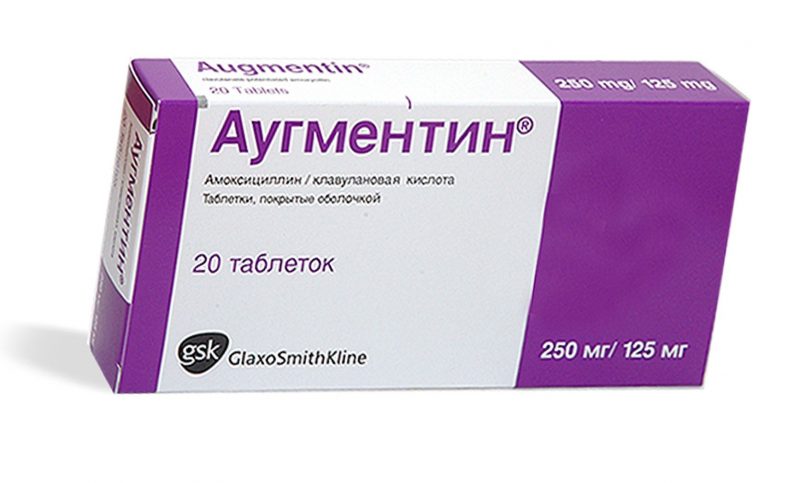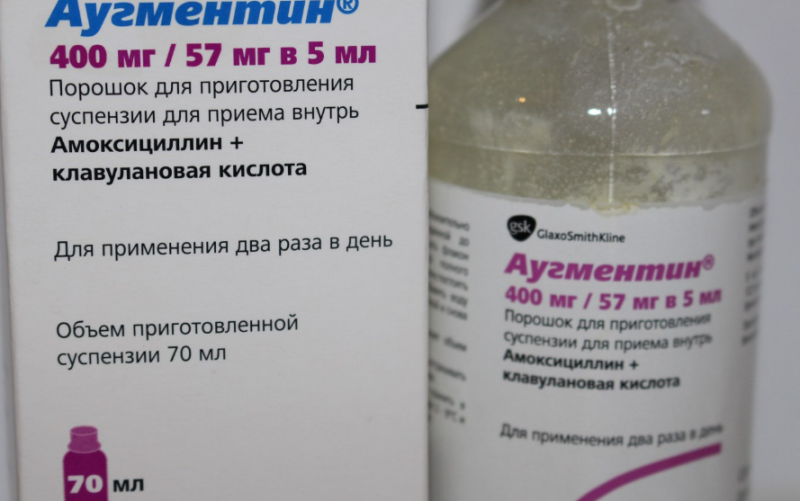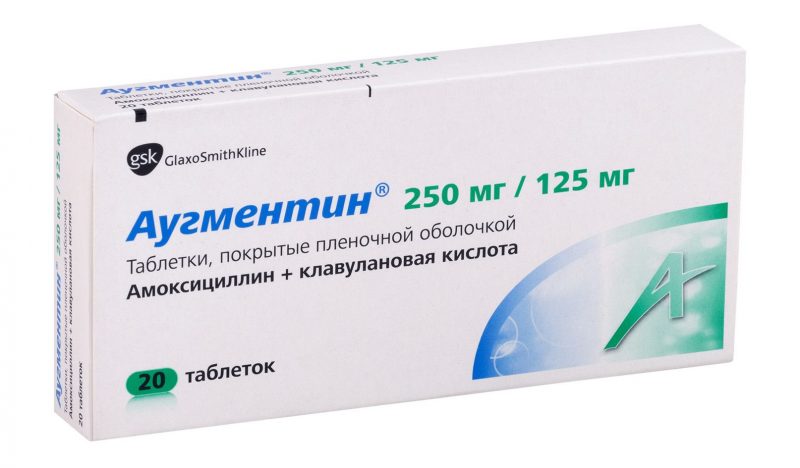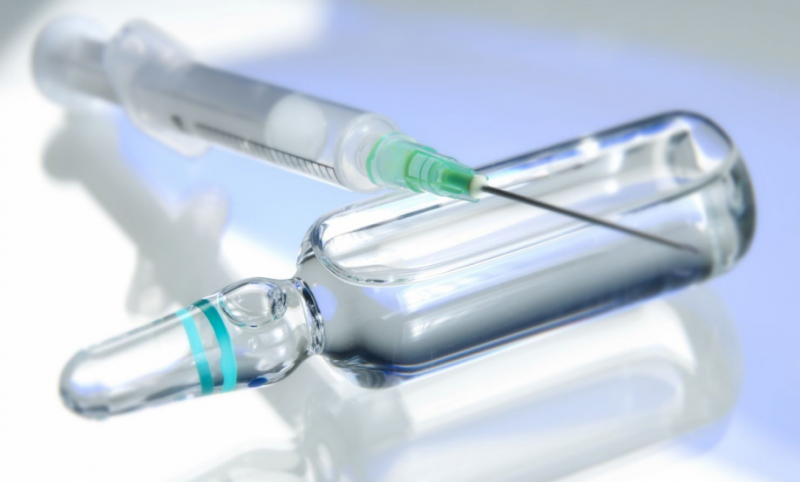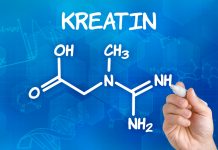The advantage of this medicine is its high efficiency and protection against destruction in the digestive tract. Instructions for use "Augmentin" for children contains detailed instructions on doses and methods of use. The antibiotic will not help with SARS or the flu, as it does not affect viruses.
Material Content:
Pharmacological properties and pharmacokinetics
“Augmentin” contains components that destroy the cell membranes of bacteria, causing the death of certain types and strains of microorganisms. Amoxicillin in combination with clavulanic acid salt provides a bactericidal effect. Clavulanate suppresses β-lactamase bacteria - enzymes secreted to inactivate the antibiotic.
The strains of dangerous bacterial pathogens exhibit sensitivity to amoxicillin:
- hemophilic bacillus;
- staphylococci;
- enterococci;
- Salmonella et al.
Augmentin most effectively destroys the cells of microorganisms that divide and grow. Clavulanic acid is also an antimicrobial agent. This component of the drug enhances the bactericidal effect of the antibiotic against hemophilic infections, enterobacteria, bacteroids, moraxella, staphylococci, streptococci, chlamydia. Clavulanate to a lesser extent suppresses Pseudomonas aeruginosa.
Advantages of the Augmentin antibiotic:
- high efficiency with oral use (this is important in pediatrics);
- protection against bacterial enzymes (beta-lactamase);
- a wide range of antimicrobial activity;
- independence of action from pH;
- high bioavailability.
The medicine is well absorbed after oral administration. Due to this feature, dosage reduction is possible without compromising treatment. Low doses of antibiotic are less dangerous for beneficial intestinal microflora. Dysbacteriosis is a typical consequence of antibiotic therapy. Imbalance in the intestinal microflora is especially dangerous for the unformed digestive system of the child.
Why appoint Augmentin
The combination of amoxicillin + clavulanic acid is considered the "gold standard" of antibiotic therapy in pediatric practice. This is the drug of choice prescribed to children primarily with appropriate indications. The drug is prescribed to the child after the examination.
Doctors often prescribe antibiotics for children without laboratory tests, explaining this by the need to prevent complications.
"Augmentin" is used in pediatrics for the treatment of bacterial diseases:
- respiratory tract;
- paranasal sinuses (sinuses);
- GIT, ducts of the gallbladder;
- with the accumulation of pus in the root of the tooth;
- tympanic cavity;
- genitourinary tract;
- skin cover.
Only a doctor can prescribe an antibiotic correctly, taking into account the type of pathogen and the severity of the disease. The specialist chooses the dosage of Augmentin for children, sets the duration of therapy. In the absence of a therapeutic effect, the doctor prolongs the course or replaces the unsuitable drug with an analog according to the mechanism of action.
Instructions for use and dosage for children
The content and ratio of amoxicillin and clavulanate in unequal forms of release may be identical or different. To avoid errors, the dose of Augmentin is usually calculated only on amoxicillin. Unless the doctor prescribes otherwise, then use the manufacturer's recommendations from the standard instructions, where the dosages are indicated in accordance with the age and weight of the children.
Augmentin tablets 250, 500, 875 mg
On the surface of the shell there is a shallow transverse groove. However, it is not recommended to divide, break, crush the tablet. The shell protects the drug from premature dissolution in the stomach, where the antibiotic is exposed to a strong acid. Tablets are usually not prescribed for children weighing less than 40 kg. If the weight is more than 39 kg, and the age is after 12 years, then you can drink Augmentin tablets.
They take the drug at the very beginning of the meal, which helps to prevent a negative effect on the balance of intestinal microflora.
Tablets 250 and 500 mg take 1 pc. 3 times a day (every 8 hours), 875 mg - 1 pc. 2 times a day. You can not independently change the funds prescribed by a doctor for analogues with a different concentration of ingredients. For example, 2 tablets of 250 mg + 125 mg are not equivalent to 1 tablet of 500 mg + 125 mg.
Powder for oral suspension
An antibiotic in this form is best for children under 12 years old. Powder 125 mg is prescribed mainly for infants from 3 months and toddlers. If a teenager is older than 12 years old and weighs over 40 kg, then you can drink a suspension of Augmentin 400 mg.
How to prepare the tool:
- First, about 40 ml of slightly warm boiled water is poured into the bottle.
- Shake the vial vigorously.
- Then add water to the dash on the outer wall of the tank.
- Shake the bottle again.
The dose is calculated according to the weight of the child and the content of amoxicillin.
A suspension of 125 mg is given to the child three times a day. “Augmentin” 200 mg is intended for two-time administration by children under 12 years of age. Maximum children of this age can take 45 mg / kg of weight per day.
Low dosages of Augmentin are used for purulent tonsillitis with a recurring form of tonsillitis, and dermatoses of bacterial origin. A small dose of a suspension of 125 mg is 20 mg / kg per day. Low dosages of antibiotic 200 and 400 mg - 25 mg / kg per day.
Severe bacterial lesions of the middle ear, paranasal sinuses, bronchi, lungs, urogenital tract, bones and joints are most often treated with high doses. Augmentin 125 mg will require 40 mg / kg, 200 and 400 mg powder - 45 mg / kg per day.
"Augmentin" should be taken as many days as the doctor prescribed. On average, the course lasts 5 days. If the cause of the disease is streptococcal infection, then the doctor can extend the treatment to 10-14 days.
Powder for solution for injection
The dose of Augmentin in pediatric practice when using any form of drug release is determined depending on the weight of the patient and the severity of the symptoms of the disease. How many ampoules of solution are needed for the course of treatment of the child, the doctor determines.
Augmentin is administered slowly, directly into a vein or with a catheter. You can replace the injection with an IV infusion. This method of administration is preferred for infants from 0 to 3 months.
Drug Interactions with Other Drugs
- "Augmentin" is not prescribed with drugs that alter the absorption, distribution, effect of antibiotic treatment.
- "Phenylbutazone" and a number of other NSAIDs, as well as diuretics, increase the concentration of amoxicillin. This is due to a decrease in tubular secretion of the antibiotic.
- If Augmentin is used together with anticoagulants, then prothrombin time analysis will be required.
- The combination of amoxicillin with allopurinol is a common cause of allergic reactions.
Contraindications, side effects and overdose
Augmentin is forbidden to take if the patient is allergic to penicillins. Hypersensitivity to the antibiotic is manifested in the form of redness of the skin, urticaria, fever, shortness of breath, cough, Quincke's edema. Other contraindications are: infectious mononucleosis, lymphoid leukemia, severe liver failure, jaundice.
The most common side effects of Augmentin:
- nausea, dyspepsia;
- flatulence, loose stools;
- inflammation of the tongue, oral mucosa;
- pain in the right hypochondrium;
- fungal infections of the skin;
- allergy.
With an overdose, negative manifestations intensify. Insomnia or drowsiness, hyperactivity, and convulsions occur. “Augmentin” in large doses can cause discoloration of tooth enamel, blood diseases, drug hepatitis, and kidney inflammation.
Antibiotic Analogs
"Augmentin" was originally produced in the UK, then generics appeared. The cost of the drug depends on the dosage and form of release. The price of the drug varies from 150 to 470 rubles. The structural analogue of Amoxiclav (Slovenia) is popular.
Amoxiclav cost:
- Powder - from 110 to 260 rubles.
- Tablets - from 225 to 412 rubles.
- A solution for iv administration - from 500 to 820 rubles.
The identical complex of active substances contains Flemoklav Solyutab (Netherlands) and Amoksiklav Kviktab (Slovenia). Drugs are available in the form of soluble tablets. A “Panclave” in the form of “regular” tablets contains high doses of an antibiotic.
Cost of analogues:
- Amoksiklav Kviktab - from 370 to 430 rubles.
- Flemoklav Solyutab - from 290 to 450 rubles.
- "Panklav" - from 290 to 370 rubles.
Augmentin or its imported counterparts may not be available at the pharmacy. Often, the pharmacist offers drugs with an identical composition and dosages to the buyer of the medicine. These may be structural analogues of the Russian-made Ecoklav and Arlet, which are cheaper than foreign drugs. Efficiency is not determined by the "hype" of the manufacturer and brand of the drug. More important than the sensitivity of bacteria to an antibacterial substance, its purity in the drug.
Amoxicillin is not used as a substitute for Augmentin, because the antibiotic itself is not protected against destruction by bacterial enzymes.
Means with the same therapeutic effects as Augmentin are its group analogues. Ampicillin is considered a related antibacterial substance.This is an obsolete antibiotic that is destroyed by beta-lactamases of bacteria, in particular staphylococci. For allergies to penicillins, azithromycin is used as a substitute.


